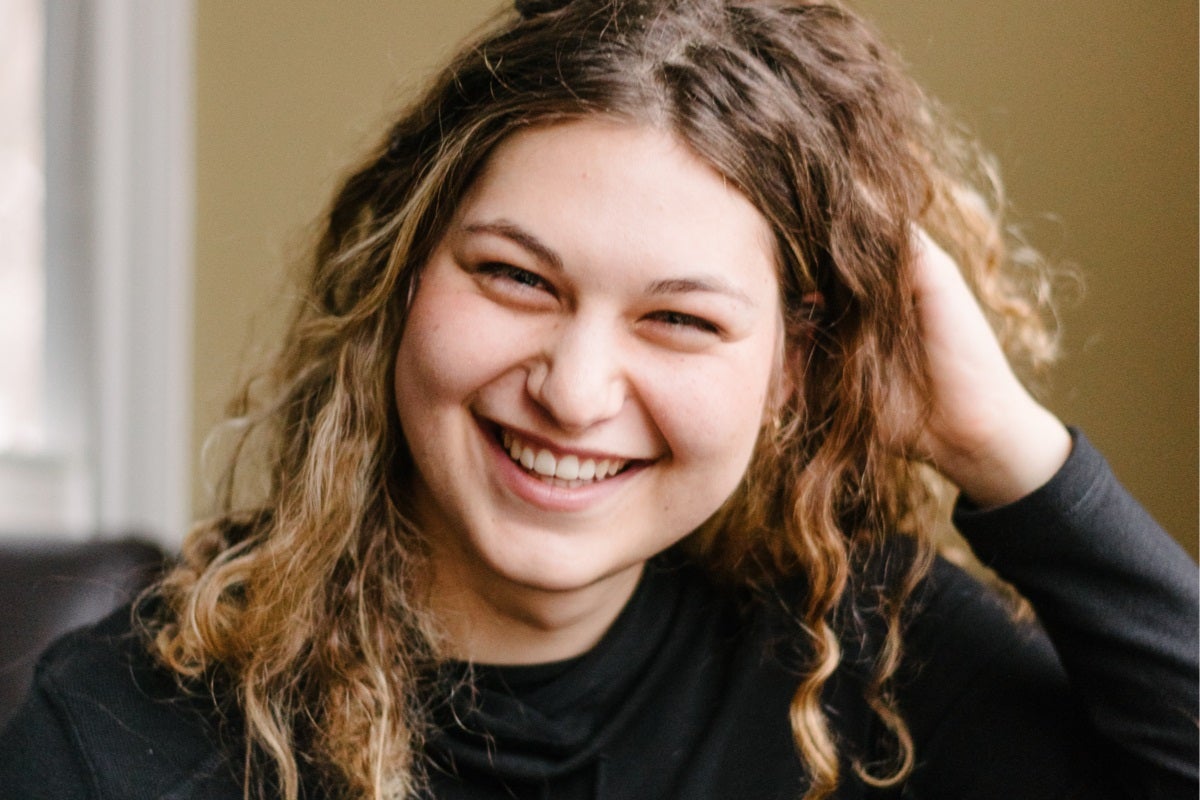
Catching up with Velocity Fund Winner Iris Redinger
The founder of Material Futures shares her advice for new students

The founder of Material Futures shares her advice for new students
By University RelationsWe caught up with Iris Redinger (BAS ’21), a recent Waterloo grad from the Waterloo School of Architecture. This summer, she was competitively selected as one of five winners of the Mitacs Entrepreneur Award for her startup Material Futures that uses biotechnology to reduce the environmental impact of the fashion industry.
Redinger founded the company as a Waterloo undergrad in 2018 and was supported by several campus entrepreneurial programs including winning the Velocity Fund $5K, the Norm Esch Entrepreneurship Award and the Engineer of the Future Fund. We asked her about some of her best moments as a student and what advice she would give to the new cohort starting this fall.

During my first co-op semester, I worked for Professor Philip Beesley, who runs a prominent installation and design studio in Toronto. I was tasked to work on a collaboration project with Iris van Herpen, a well-known Dutch fashion designer. There was another student tasked on the project too, and I remember the feverous excitement we shared working on dresses for her runway collection. We got very lucky to be assigned to this work, and I think we did a good job. The dresses were shown at Paris Fashion Week and subsequently were shown at an exhibition at the Royal Ontario Museum. I will always remember how I felt when my friends and family saw my work on display, and the memories I have working on that collection will last a lifetime.
Throughout my undergraduate degree, and especially during my co-op semesters, I found that I wanted to spend time exploring my own ideas and interests! I felt scared admitting to myself that I was more excited about my ideas and interests that (often) lay outside of architecture than the projects my professors believed would inspire the next generation of architects. I always had a few side projects on the go, and many were related to fashion and textiles. Material Futures came from an idea of mine to use microorganisms as a source of textile colorants instead of using petrochemicals, and I felt that it was an idea that should be shared with the world.
There is never a “right time” to launch a business but being a Waterloo student at the time was extremely advantageous and gave me access to the technical and business resources I needed to bootstrap my original idea, which I am now commercializing.
I’m extremely fortunate that being a multitasker is one of my natural gifts. However, I needed help filling the technical and business gaps in my knowledge that are necessary to running Material Futures as a successful business. I reached out to family, childhood friends, new friends I made on co-op, professors, peers, and people on LinkedIn! I hired a team of researchers, and some of the leading experts across Canada. I continue to build a network of allies that fill in the knowledge gaps and provide ideas, solutions, and occasional reality checks. This network of people made it possible for me to balance everything successfully.
I truly believe there is nothing more powerful than a great idea. A great idea not only answers a need for others, but also a need within yourself. Value your ideas. Follow them and visualize where they might lead. Give special attention to the ones that elicit excitement and passion. If you have that type of reaction, I advocate that you should explore it. I wish you all the best on your journey!

Read more
Architecture alumnus honoured for innovative tech to reduce fashion's environmental impact

Read more
Velocity Science returns to campus and is ready to advance the growth of science-based startups

Read more
Six new early-stage companies will join later-stage founders at Velocity’s incubator in downtown Kitchener
The University of Waterloo acknowledges that much of our work takes place on the traditional territory of the Neutral, Anishinaabeg, and Haudenosaunee peoples. Our main campus is situated on the Haldimand Tract, the land granted to the Six Nations that includes six miles on each side of the Grand River. Our active work toward reconciliation takes place across our campuses through research, learning, teaching, and community building, and is co-ordinated within the Office of Indigenous Relations.